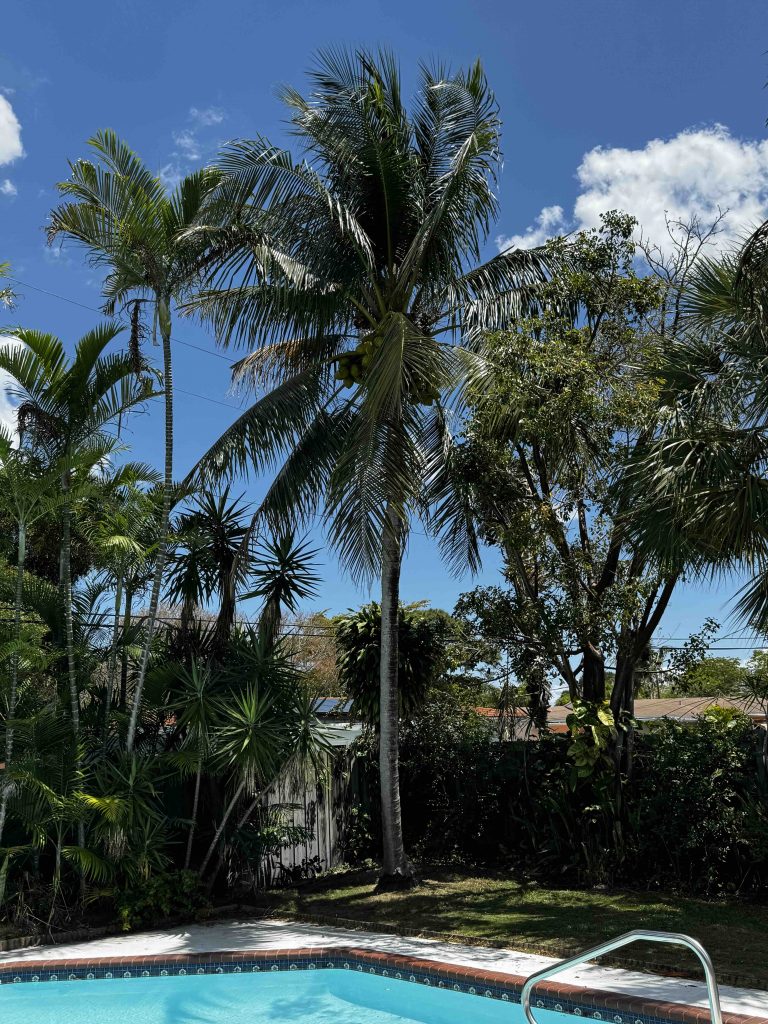13 April 2025
I just told Tom and Kurt I wouldn’t be going to Island City Stage this afternoon. I just don’t feel “right” and my balance is a little more off than usual. These good days, bad days are a pain in the *ss. I admit to be dragging a little yesterday but didn’t think it would be a problem today.
Trevor mowed this morning for me. I picked up two fallen coconuts from the back yard so he wouldn’t have to move them when he mowed. The coconut tree is a volunteer from a previous coconut tree on the same site. It’s called a Dwarf Malaya but it’s anything but dwarf. I estimate it to be around 25 feet high and they can easily exceed 50 feet.

I’ve had several coconut palms in the yard but all have died except this one. People would stop and ask me for the coconuts from the ones in the front yard but the one in the back yard is the most prolific.

In June, when I have everything trimmed, the crew saves the coconuts. It’s like a money exchange with them.
People roam the neighborhood climbing coconut palms or having extremely long extension saws to bring them down. I’ve had them climb mine in the front to bring down the coconuts and when they drop a bundle, you can hear the thud from the impact with the ground inside the house.
Sadly, I’m down to one coconut palm but I have a bunch of others. Right now, I have nine different palm species in the yard. That’s down from 11 over the years. Palms are a natural to plant in Florida. They can survive hurricane force winds of 145 mph.
Some sources claim 12 native palms to Florida. They include the Royal Palm (Roystonea regia) but Fairchild Tropical Garden only lists 11 species native to the state. Many botanists consider the Royal Palm naturalized and assume the seeds washed up on shore accidentally. Compare that to three species of native palms in my home state of Mississippi.
The palm trees in my yard are as follows:
- Cabada palm (Dypsis cabadae)
- Dwarf Malaya (Cocos nucifera)
- Royal Palm (Roystronea regia)
- Dwarf Date Palm (Phoenix robelenii)
- Chinese Fan Palm (Livistonia chinensis)
- Washington Palm (Washingtonia robusta)
- Queen Palm (Syagrus romanzoffiana)
- Cabbage Palm (Sabal palmetto)
- Unknown species – gift from Betty and I’ve forgotten its name.
That’s it for your palm tutorial. Stay tuned!
